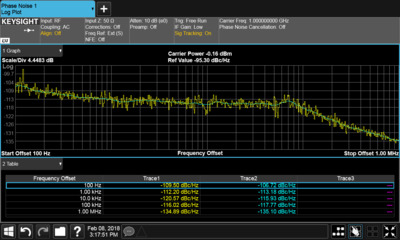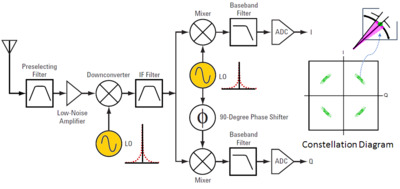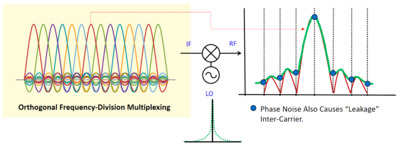Achieve accurate RF measurements by understanding spectral purity

Spectral purity is a signal’s characteristic stability. For testing purposes, a signal must remain stable in the short and long term. Selecting a signal generator with high spectral purity ensures that the measurements signify the device under test’s (DUT) performance rather than the signal generator’s limitations.
Drift or long-term stability is typically defined over a period of more than a second. Current signal generator technology generally offers good long-term stability.
The primary concern is frequency changes in less than a second, or short-term stability. These fluctuations are caused by non-deterministic signals like noise, 1/f flicker noise, and shot noise that modulates the carrier. These impact both amplitude and phase.

A tuning fork emits an almost perfect tone and tunes a piano. This is a good analogy for demonstrating the importance of signal purity. A signal generator works like a tuning fork, emitting an almost perfect signal used in many diverse RF applications such as clock references, RF power amplifier testing, adjacent channel sensitivity testing, and many more. The integrity of the signal generator output is what we refer to as spectral purity.
Robust signal generators output signals with as little imperfection as possible. However, random amplitude phase fluctuations occur in real-life waveforms. In the time domain, a waveform has amplitude and phase shifts. Meanwhile, the signal exhibits frequency and amplitude modulation in the frequency domain. The main measurements for spectral purity are spurs, phase noise and harmonics.
This article explores the concept of spectral purity and why it matters.
Harmonics and spurious
Both harmonics and spurious emissions are deterministic (non-random) signals generated from mixing or dividing signals to create an output signal. These frequencies are not desired in RF systems. The harmonics are integer multiples of the carrier frequency, while the spurious frequencies are non-integer multiples.
Figure 2 shows a 1 GHz carrier frequency and its harmonics, as well as spurious emissions. The second harmonic (marker 2) is -64.36 dBc relative to the fundamental carrier (marker 1), and the third harmonic (marker 3) is -72.83 dBc. Markers 4 and 5 designate spurs.
It is crucial to select a high-dynamic range signal analyser to measure harmonics and spurs. Otherwise, the detected harmonics and spurs may come from the signal analyser, not the DUT.
Phase noise
Phase noise is the noise spectrum around an oscillator signal in the frequency domain. It describes an oscillator’s frequency stability. In Figure 3, you can see a signal’s phase noise and other non-ideal components.
Frequency stability has two components: long-term and short-term, as shown in Figure 4.

Table 1 contrasts long-term and short-term frequency stability. Short-term fluctuations contribute to phase noise, while long-term drifts affect accuracy.
| Short-term frequency stability | Long-term frequency stability | |
| Period | Seconds | Minutes–years |
| Terminology |
Random noise: phase noise, jitter Deterministic: spurious |
Accuracy, drift, aging |
| Measurement | £(f) curves, integrated totals, spot measurements, jitter (p-p) | Often determined by a frequency reference |
Table 1: Long-term and short-term frequency stability.
Phase noise is commonly defined as the amount of single-sideband (SSB) power contained within a 1 Hz bandwidth at a specific frequency away from the main frequency. The equation below explains:
£(f) = Noise power in a 1 Hz bandwidth/main frequency power where £(f) has units of dBc/Hz
Figure 5 shows a signal generator’s SSB phase noise measurement. The yellow trace indicates instantaneous power measurements, and the blue is the average result.
When phase noise matters
Understanding phase noise’s impact on measurements is vital for getting the right test performance level. High-phase noise obscures weak signals close to the main frequency.
Radar applications
Radar systems require excellent phase noise. A radar sends pulses at a defined frequency and measures how the returning pulse’s frequency has changed. Changes in frequency tell us about the target’s velocity as defined by the Doppler effect. A slow-moving object generates a slight shift in the returning pulse’s frequency.
In Figure 6, the ‘signal of interest’ is the moving target’s returning pulse, and the ‘interfering signal’ is the fixed object’s returning pulse. The radar receiver cannot identify the moving object if the phase noise masks the downconverted signal of interest.
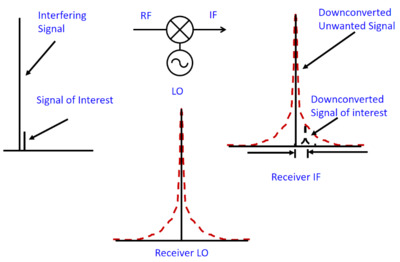
Digital modulation
Figure 7 is a simplified quadrature phase key shifting (QPSK) digital receiver block diagram. The LO signal’s phase noise is translated into the mixers’ output. Phase noise creates radial smearing of the symbols (shown in green) on the constellation diagram. Overlapping radial smears for closely spaced symbols in a higher-order modulation scheme (eg, 256 QAM) results in poor receiver sensitivity.
Orthogonal frequency-division multiplexing (OFDM)
OFDM is a common modulation scheme for wideband digital communication. It uses many closely spaced orthogonal subcarrier signals to transmit data in parallel (Figure 8). LO phase noise causes the subcarriers’ phase noise to interfere with other subcarriers, degrading the modulation quality of the OFDM signal.
You can adjust phase noise at the synthesiser section of sophisticated signal generators. This allows you to reduce the phase noise performance and helps you assess your receiver design’s sensitivity.
Mobile radio
Radio channel spacings will decrease as the available spectrum becomes scarcer. This puts a tighter constraint on engineers to design more selective receivers. To test receiver selectivity, a signal generator must have good spectral purity. If not, you will be testing your generator and not your receiver.
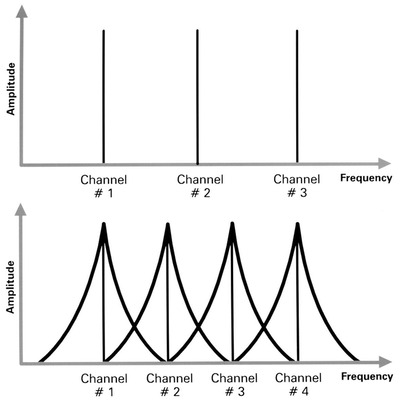
The measurement: adjacent channel selectivity
Adjacent channel selectivity is one common measurement of whether the receiver rejects unwanted signals. Figure 10 shows a receiver IF (intermediate frequency) passband with an in-channel signal set to a specific sensitivity level. A second signal generator is fixed one channel spacing away. The signal’s amplitude is increased until it breaks through the passband and distorts the in-channel signal. The difference between the two signal levels is called adjacent channel selectivity.
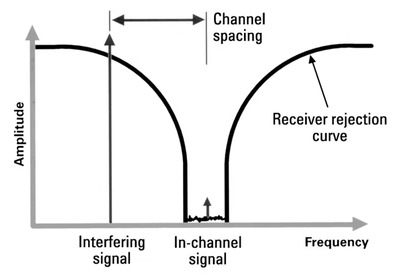
Phase noise impact
Figure 11 shows what occurs when a signal generator has high phase noise levels. The phase noise crosses into the passband, distorting the desired signal and making the receiver look worse than it is.
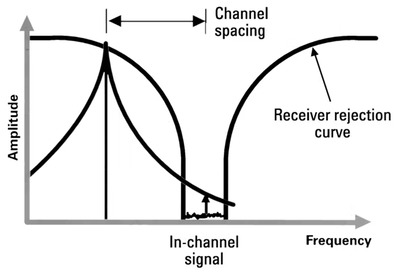
Spurious signals cause problems similar to phase noise (Figure 12). Suppose a spurious signal shows up in the radio channel spacing. In that case, you will measure the amplitude difference between the spurious signal and the out-of-channel signal generator.
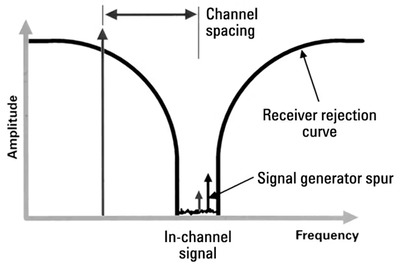
Local oscillator substitution
Signal generators used as local oscillators (LO) need low-phase noise. Let’s look at two signals, f1 and f2, in Figure 13. These signals will be mixed with a local oscillator signal (Figure 14) down to an intermediate frequency (IF), where highly selective IF filters can separate one of the signals for amplification, detection and baseband processing. Recovering the desired signal should be easy if it is the larger signal.
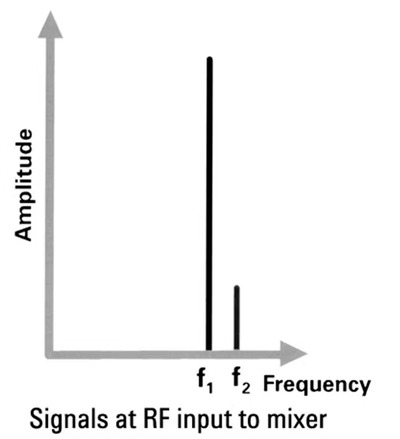
Any phase noise on the local oscillator signal is translated directly to the mixer products. If the smaller signal is preferred, the translated noise in the mixer output may completely hide it (Figure 15).
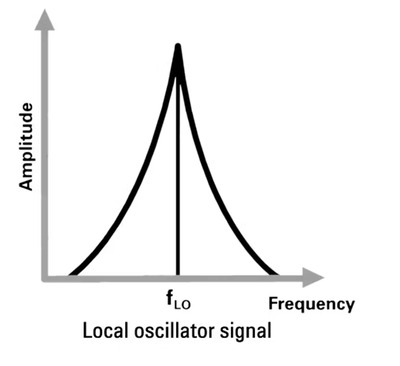
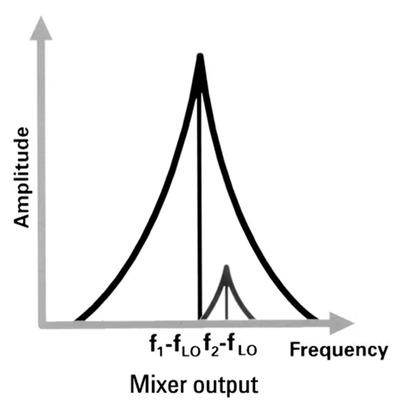
The smaller signal’s mixing product is no longer recoverable even though the receiver’s IF filtering removes the larger signal’s mixing product. This effect worsens in highly selective receivers with a wide dynamic range.
Conclusion
Wireless devices are adding more advanced RF capabilities, with more test set-ups under varying conditions. Testing additional frequency bands, more advanced standards, and antennas increases production and verification testing challenges. For example, 6G’s proposed requirements of ultrafast download speeds, highly complex modulation schemes and wider bandwidths will make signal purity even more critical.
Therefore, test results must be generated quickly and reliably. Signal generation test equipment must produce pure and precise signals to achieve this.
Signal generators: does analog or digital make a difference?
With so many options, it's important to understand which signal generator is best to achieve...
Using AI to build your next-gen wireless system
The central challenge engineers face when designing wireless systems and networks is their...
Ensuring 5G network performance
To be successful in business-critical use cases, the wireless networks need to be as reliable as...



